"An organolithium reagent is an organometallic compound with a direct bond between a carbon and a lithium atom. As the electropositive nature of lithium puts most of the charge density of the bond on the carbon atom, effectively creating a carbanion, organolithium compounds are extremely powerful bases and nucleophiles. For use as bases, butyllithiums are often used and are commercially available."
a direct bond between a carbon and a lithium atom. As the electropositive nature of lithium puts most of the charge density of the bond on the carbon atom, effectively creating a carbanion, organolithium compounds are extremely powerful bases and nucleophiles. For use as bases, butyllithiums are often used and are commercially available."
"Organolithium reagents can be aggregated, with lithium coordinating to more than one carbon atom and carbon coordinating to more than one lithium atom. Three general factors affect aggregation: the electrostatic interaction between opposite charges, the coordination sphere of lithium which can be either solvent molecules or Lewis base and the steric hindrance of the hydrocarbon part.[2] The lithium atoms tend to form triangles and higher aggregates."
"In the solid state of methyllithium, 4 lithium atoms form a tetrahedron with each face capped by a methyl group which bonds simultaneously to three Li atoms (η3 hapticity). Long-range interactions between (MeLi)4 units are based on η3-Li-CH3-η1-Li bonding. Butyllithium forms a hexameric Li6 octahedron without any long-range interactions."